Film is back! Well, sorta. OK, film never went anywhere, but like vinyl records did in the early 21st century, the steady decrease of film usage seems to have bottomed out and has started to increase again.
According to Ilford in an article published in February 2015, 30% of people shooting film are younger than 35. Think about that for a minute, someone who was 35 in 2015 was 15 years old in 1995. More than four years have passed since that article, so its plausible that the percentage is higher. That means that roughly a third of people using film today grew up in the digital age and likely never shot film before, and if they have, they were likely cheap point and shoot or disposable cameras when they were kids.
With an increase in interest among young photographers who might be looking to buy their first film camera, there is a lot of information out there from people making recommendations on what to buy. There are countless lists out there telling you what camera is a great first film camera that is cheap, easy to use, and reliable. Each of those articles make their own claim to have the best cameras for the beginner, but despite the variety, on nearly all of them, two models in particular show up the most often. The Canon AE-1 (or its later variant the AE-1 Program), and the Pentax K1000.
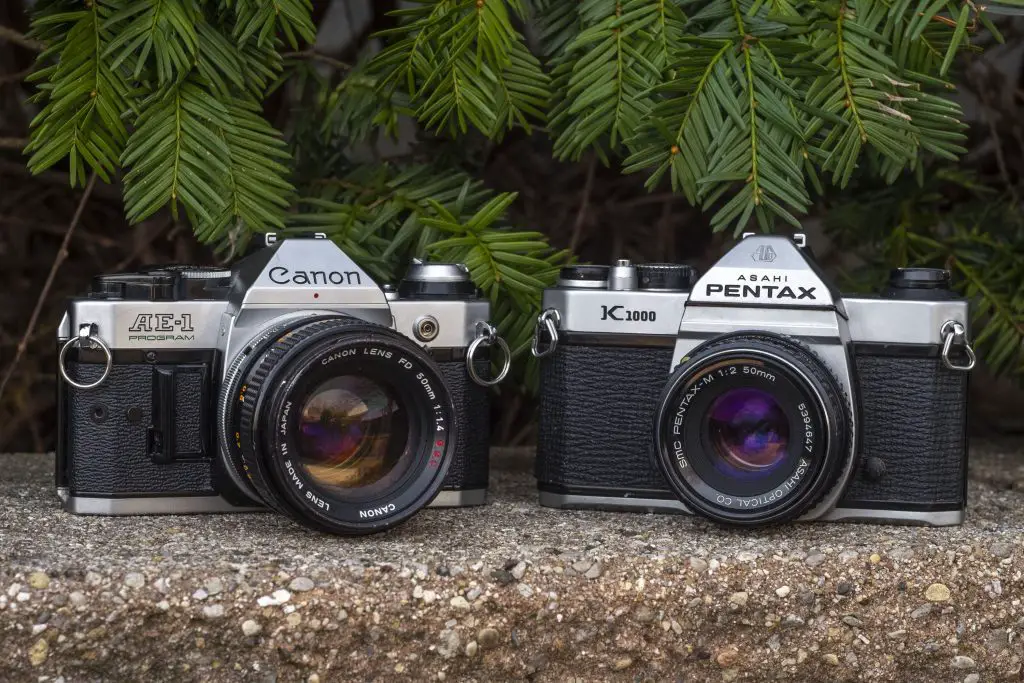
But don’t take my word for it, check these articles here, here, here, here, here, here, here, here, here, here, and here….oh wait, and here too. That’s just the first two pages of a Google search. Of course other quality cameras made by Nikon, Olympus, Minolta, Rollei, Hasselblad, and many others regularly make these lists too, but for the same two models to be considered over and over again, there has to be something to it.
I’ve never actually written anything about either model, simply because there’s just so much information out there already, but I thought it was time that I took a look at these two oft-recommended cameras in what I’m calling the Student Camera Showdown!
Note: For the purposes of this article, I am treating the Canon AE-1 and AE-1 Program to be the same model. I make references to the AE-1 Program where relevant, but there’s enough that’s similar between the two to consider them the same.
Shutter
Both cameras have horizontally traveling cloth focal plane shutters with a top speed of 1/1000 and a flash sync speed of 1/60. The K1000’s slowest available speed is 1 second, whereas the Canon can go down to 2 seconds, but frankly that’s not a major difference maker for most students, as slow shutter speeds would most likely be obtained using Bulb mode and a shutter release cable, which is available on both models.
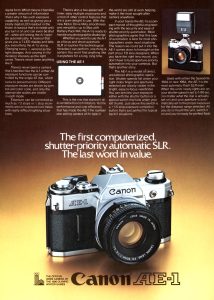

The biggest difference in the shutters of the two cameras is not on the spec sheet, rather in how it is operated. Both the AE-1 and AE-1 Program use a electromagnetically controlled shutter, whereas the K1000 goes old school with a fully mechanical shutter that is controlled by springs, levers, and for the slow speeds, a mechanical governor. Although electronic shutters are said to be more accurate, they are also more likely to fail over time and also require a battery to work, whereas the mechanical shutter in the K1000 works without the need for a battery, making it a far more reliable design.
I’m all for modern conveniences, and having an electronic shutter on a camera does not automatically make it inferior to a mechanical one, but we have the benefit of nearly 4 decades worth of history to look back on, and the K1000’s shutter almost always works, whereas the Canon’s has proven to be more temperamental. Making matters worse, every Canon AE-1 or AE-1 Program I’ve handled is very particular about which batteries they work with. Generic off brand batteries generally don’t fare well. You really need to use a freshly charged name brand battery for best results.
Winner: Pentax K1000
Lens Selection
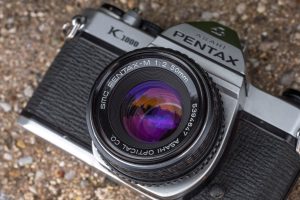
The Canon FD and Pentax K mounts are two of the most successful lens mounts ever made with an enormous variety of lenses available. Canon’s FD mount was a revised version of their original R-mount from 1959 and was used on Canon SLRs until 1990 with the release of the T60. Pentax’s K-mount didn’t make its debut until 1975, right before the release of the K1000, but is still being used by Ricoh/Pentax digital SLRs today. Canon’s FD mount was only ever used on Canon SLRs although a variety of third party lens makers produced lenses for them. The Pentax K-mount on the other hand was the preferred mount for many third party camera brands like Sears, Ricoh, Chinon, Vivitar, Cosina, Zenit, and many others making them extremely common.
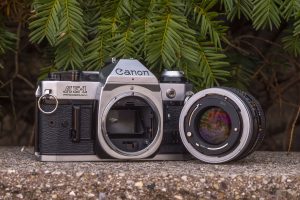
Without looking at every single lens ever made by every company, it is possible that some examples of specific ultra wide or telephoto lenses exist for one system but not another, but for the focal lengths that any student would ever care about, the selection is huge and there is no clear winner here.
Some people prefer a bayonet mount over a breech lock, but the differences are negligible. I think that both lens systems are robust, easy to use, and produce quality images, so I’m calling this one a tie.
Winner: Tie
Features
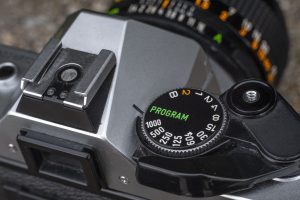
This one’s pretty easy as the Canon AE-1 is the far more featured camera with Shutter Priority Auto Exposure in the original model, and Full Program Auto Exposure in the later. The Canon’s meter is a Silicon Photo Diode which has increased sensitivity over the CdS in the Pentax, especially in low light. The Canon has an aperture readout in the viewfinder and electronic self timer, both features the K1000 lacks.
The K1000 is a manual everything camera without any automation of any kind. The meter is of the match needle type, and most of the earlier K1000s have a viewing screen with only a microprism circle. Later models did come with a split image rangefinder focus aide, but from my experience the earlier ones are much easier to find.
I could argue that nothing the AE-1 offers is essential for a student, but if a long feature list, a more featured viewfinder, and auto exposure are your requirements then the AE-1 is the clear winner here. Upon its release, it was a triumph of engineering and helped catapult Canon as a dominant force in the consumer SLR market.
While the K1000 was no slouch, it catered to a different kind of customer.
Winner: Canon AE-1
Viewfinder
For most people, the viewfinder would be considered a feature of the camera, but for me, a good viewfinder is a huge asset to me with my poor vision. While all SLRs offer through the lens composition, the amount of information, different types of focus aides and overall brightness can improve a shooting experience dramatically.


Comparing the two viewfinders, both are good, but the Canon’s is better. Not only is it noticeably brighter, but it offers an aperture readout (needle in the original AE-1 and red LED in the AE-1 Program) and both a microprism collar and split image rangefinder focus aide. While the Pentax viewfinder isn’t exactly dark, when looking through the two side by side, there is a noticeable difference. Most K1000s also lack a split image focus aide, which is curious considering this was a very common feature in SLRs in 1976 when this model was first released. I’ve read that later Chinese made K1000s eventually did get it, but I’ve never come across one.
Note: In the viewfinder images above, the brightness difference between the two cameras isn’t very noticeable, which is a result of how I capture these ‘through the viewfinder’ shots with my cell phone which tends to wash out any differences in brightness. Trust me, the AE-1 is brighter.
Also, in the group photos in this article, I show the AE-1 Program with a Canon f/1.4 lens which could make the images brighter, but for the viewfinder pics, I had a Canon f/1.8 lens mounted which although still faster than the Pentax’s f/2 rating, it should not make a noticeable difference in brightness.
If I had to choose a camera based solely on the viewfinder and nothing else, the decision would be very easy for me.
Winner: Canon AE-1
Ergonomics
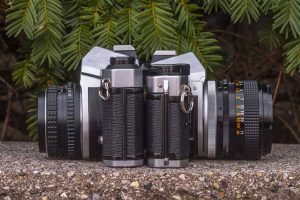
Both cameras have good ergonomics. Every essential control is exactly where you’d expect to find it with no quirky left-handed buttons or levers in odd ball locations. Both the shutter release and film advance levers fall naturally where your fingers expect them to be. Loading film into both cameras is exactly the same process with no unique or troublesome steps.
Both cameras are also reasonably compact with the K1000 having slightly taller shoulders and the AE-1 being slightly longer front to back, but nothing that screams ergonomic failure. At 590 grams without a lens, the Canon weighs almost exactly 100 grams less, making it a lighter camera that is easier to carry. I do believe that later Chinese made K1000s weigh less than earlier models due to an increased use of plastics, but I did not have one for this test.
I’ll just say that although there are very subtle differences between the two, there’s nothing significant enough to score either model a decisive victory here so I’m calling it a tie.
Winner: Tie
Reliability
A sometimes overlooked characteristic of a product, how reliable or dependable an item generally is, should be a very important consideration when purchasing something. When buying a new appliance, computer, automobile, or any other large purchase, a savvy shopper will likely look up Consumer Reports ratings or read reviews online to read about other owners experiences with said product.
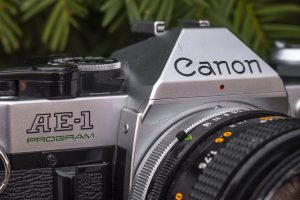
When buying something used, especially something in the realm of 30-40 years old, the reliability of the product is even more of a consideration. Of course, problems that are said to be common in one model may be completely absent in a specific example, or rampant in another, so this category comes with big helping of YMMV (Your Mileage May Vary).
With that said, I’ve handled a large number of Canon AE-1s and Pentax K1000s, and I can tell you with absolute certainty that many examples of both cameras still technically worked, there was one model that often had more issues than the other.
That model of course, is the AE-1. Being an electronic camera, there’s more to go wrong. The camera’s circuitry is entirely dependent on power, so if some previous owner left a battery in the chamber for decades and it leaked, it could corrode the wiring rendering the camera completely inoperable.
Even in instances where the camera still physically works, it is still likely to have the dreaded “Canon Squeal” which is caused by lubricant that has dried up on the mirror dampener assembly which makes a horrific noise each time you fire the shutter. There are many tutorials online showing how to stop this squeal, many of which use methods I don’t approve of. I watched a few of these videos and in my opinion, this one does the best job of showing the repair both through the lens mount and the bottom of the camera. If you watch the video, you can hear a sample of the squeal at the :37 second mark.
Another issue with the AE-1 is the poorly designed battery compartment which is front and center on the front of the camera, behind a very cheaply made door that often breaks off. It is very common to find AE-1s with battery compartment issues, either due to corrosion or a broken door.
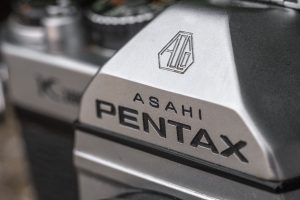
The Pentax K1000 on the other hand, can still suffer from a corroded battery compartment too, but being a fully mechanical camera, the camera will still fire with a corroded compartment. The K1000 only needs power for the match needle.
I’ve handled many K1000s and AE-1s over the years, and in my experience, the number of faults between the two is much higher on the Canon.
Winner: Pentax K1000
Performance
When it comes to SLR cameras, the performance of the camera largely depends on the quality of the lenses and the skill of the photographer. As these are are both cameras aimed at students, you could likely assume that the lens is the only measurable element of the camera’s performance.
As it is with nearly all Japanese optical companies, both Asahi Pentax and Canon were adept lens makers and pretty much any lens you’re likely to find for a Canon AE-1 or Pentax K1000 is going to be great.
Since I already talked about the lenses earlier in this article, I’ll just say that both cameras are just as capable of amazing and terrible shots, but whatever types of images you get from them, it won’t be the camera’s fault.
Here are galleries of sample images shot in both of the cameras reviewed in this article on fresh Fuji 200 film. The first is from the K1000.
This second gallery is from the AE-1 Program on the same film.
I could have flip-flopped these two galleries and you likely would have never noticed as both cameras are very capable of making excellent photographs.
Winner: Tie
Price
The price you pay for something is the ultimate factor of value. If you pay more for something, you should expect to get more for it, right? Since we’re talking about old cameras here, I thought it makes sense to compare both the prices these cameras likely originally sold for and what you can expect to pay for them today.
Both the Canon AE-1 and Pentax K1000 made their debuts in 1976 which means comparing their prices should be pretty easy, and while that’s true, its worth noting that upon their release, the two cameras were targeted at different market segments. The Pentax K1000 was an entry level camera that was intended to introduce the world to Pentax’s new K-mount. The Canon AE-1 was a sophisticated electronic camera, aiming to bring 35mm SLR quality and shutter priority automatic exposure to the masses.
I was unable to find any ads from 1976 specifically stating the MSRPs for both, but I did find a 1977-78 Sears catalog that had both cameras listed in it and the differences aren’t even close.
The K1000, being the more basic camera, had a retail (not MSRP) price of $154.50 with the SMC Pentax 50mm f/2 lens, and the Canon AE-1 was priced more than a hundred dollars more at $279.50, over an 80% increase. When adjusted for inflation, these prices compare to about $650 and $1165 today.
It was clear that a customer looking for cameras in the K1000’s price range, likely would have not considered the AE-1 as it would have been well out of their price range. Curiously, Canon did have a lower end version of the AE-1 without AE called the AT-1, but it was only $40 cheaper, selling for $239.50.
So even though it is clear that these two cameras didn’t compete for the same types of customers back then, they certainly do today as the Canon AE-1 and Pentax K1000 are two of the most commonly recommended “student film cameras”, so let’s look at what you can buy them for today. For that, we’ll use sold prices on eBay. I used an eBay price tracking program called Bidvoy that searches for prices of goods sold on eBay in any given time period. I searched for both cameras sold via auction (not Buy It Now) over the past 6 months.
Looking at the average of all auctions over the last 6 months, one thing that immediately stands out to me is that there were more than double the number of AE-1s sold over K1000s, suggesting there are far more of them out there. This by itself might suggest that the AE-1 is the more “popular” camera simply due to there being a larger supply of them.
The average price of the AE-1 compared to the K1000 is $76.47 to $65.07, a difference of $11.40, or 17.5%.
To most people, a difference of barely over $10 isn’t much, especially when looking to buy something like a camera, so you might argue that the prices for the two cameras are effectively the same. But with such a huge disparity of price when they first came out, and a 17.5% price difference today, both in favor of the K1000, I think it is safe to say that for the past 43 years, the K1000 has been the value king between the two.
Winner: Pentax K1000
Final Conclusion
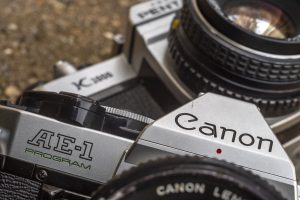
Regardless of what I say in this article, there are legions of fans of the Canon AE-1 and Pentax K1000. These were both extremely popular cameras that sold well for a very long time, and they wouldn’t have done that if they weren’t any good.
I own both of these cameras, and have made some really great photographs with each, so you might even say that comparing the two makes no sense at all, but since this is the Internet and people like to compare things, I feel as though I’m obligated to you to pick my favorite 35mm student camera. If I’m being perfectly honest, I don’t even know that if allowed to choose what I think is the best student camera from every camera ever made, that I would pick either of these two. I might go with a Minolta SRT-101, a Nikon FM2, a Pentax MX, or even a rangefinder, but none of those cameras rarely top the most recommended cameras like these two do.
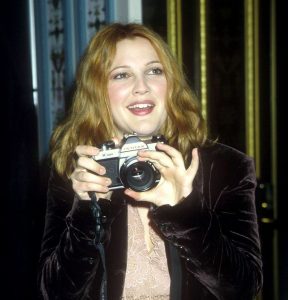
Both the Pentax K1000 and Canon AE-1 have an outstanding selection of cheap and well made lenses, they both have excellent ergonomics that don’t require much in the way of reading a user manual to master, and they each are very easy to use and capable of making excellent photographs. But when it comes to recommending something to the first time film photographer, for me, value, simplicity, and reliability are three things that win me over, and in those categories, the Pentax K1000 wins all three. It is cheap, simple, and reliable, all things that a student should covet over electronic wizardry.

Could a student do well with a Canon AE-1? Sure! Millions have, but I just think that the K1000 is the perfect student camera. You can pick it right off that table at your local thrift shop or garage sale, dust it off, load in some film, and without even thinking about putting in a battery, start shooting it and more than likely it is going to do fine. I just can’t say that about the AE-1.
What do you think about my recommendation? Do you agree or disagree? Let me know in the comments section below.
External Resources
Believe it or not, I’ve never written full scale reviews for either of these reviews, but many other people have. Here are a few of my favorites.
Canon AE-1
https://www.casualphotophile.com/2014/07/15/canon-ae-1-camera-review/
https://blog.jimgrey.net/2013/06/03/canon-ae-1-program
https://kenrockwell.com/canon/fd/ae-1-program.htm
http://attemptsat35mm.com/canon-ae-1-an-honest-review/
https://james-grundy.com/canon-ae-1-program-review/
http://www.alexluyckx.com/blog/index.php/2015/02/20/ccr-review-4-canon-ae-1-program/
Pentax K1000
https://www.casualphotophile.com/2016/11/07/pentax-k1000-camera-review/
https://blog.jimgrey.net/2012/03/05/pentax-k1000
https://www.kenrockwell.com/pentax/k1000.htm
https://istillshootfilm.org/post/113167676510/pentax-k1000-review
http://www.alexluyckx.com/blog/index.php/2015/01/23/ccr-review-2-pentax-k1000/
https://filmphotographyproject.com/content/reviews/2014/01/pentax-k1000-fpps-35mm-camera-year/

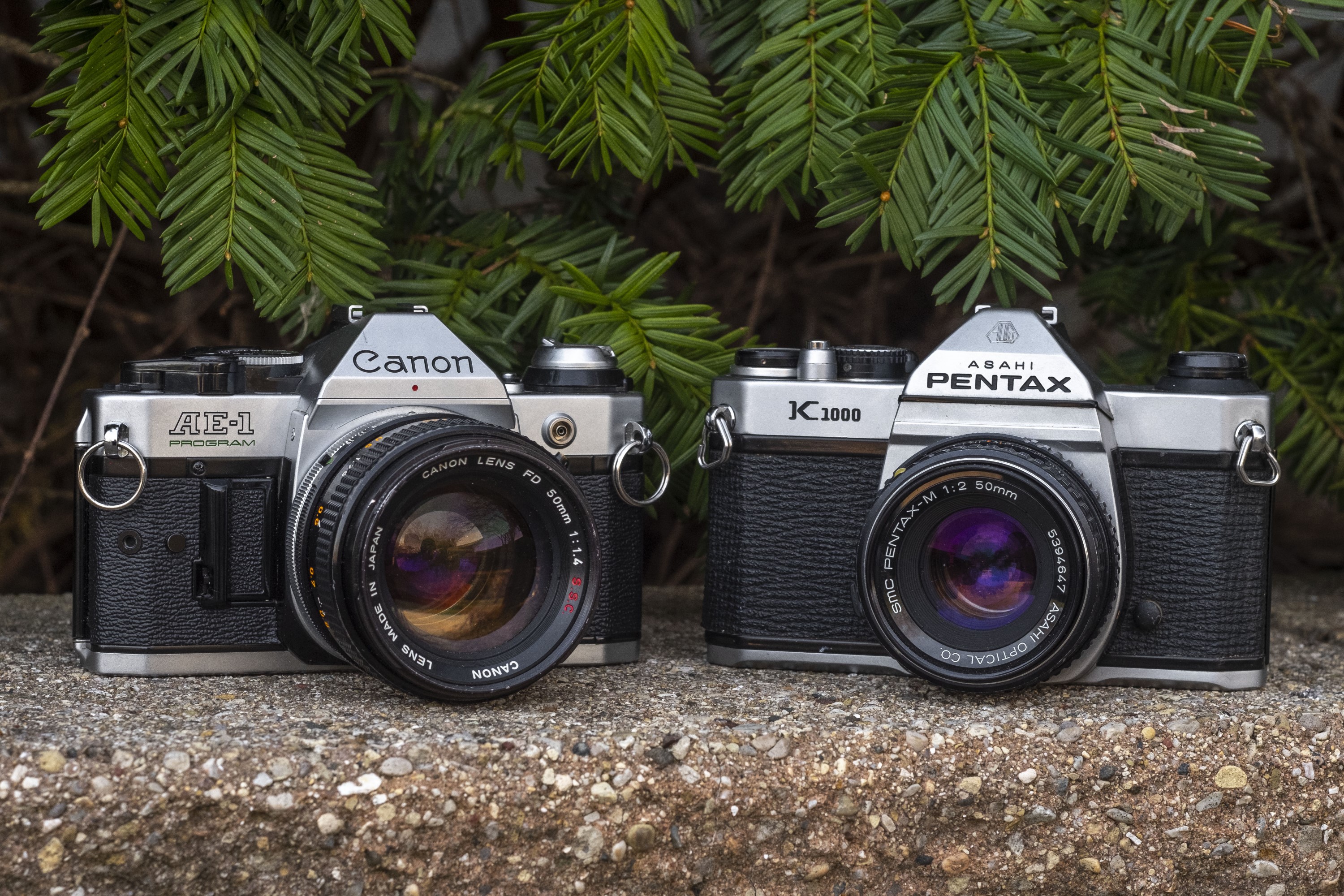
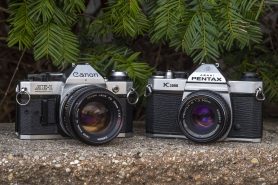

















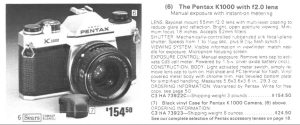
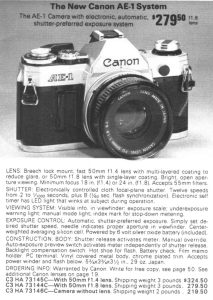


Excellent and thought provoking article. Having recently closed my film camera shop I can honestly say that, for beginners, I would favour the K1000 over the AE 1 mainly due to reliabilty problems with the AE 1. I have also sold many Kodak Retinettes to first timers. OK, they don’t have interchangeable lenses and they are essentially a view camera but, like the K1000 they don’t rely on batteries to operate and the Reomar lens is capable of very acceptable results. None of my own cameras that i use rely on batteries to work apart from the Nikon F2 Photomic that, like the K1000 only needs a battery for the meter. To my mind, the less electronic gadgetry there is, the less there is to go wrong.
I think anyone with any level of experience in the industry understands that the K1000 and AE1 are in different leagues, but the person just getting started might not understand that based on how often these two cameras are recommended. Frankly, if someone were to ask me what I’d recommend as a first camera, I would probably push them towards a Nikon FM or even Nikkormat.
You are correct on all points as far as I am concerned Mike. The Pentax was my first decent camera, and one pf the reasons I bought it was because I couldn’t afford the Canonet Giii Rangefinder that my best friend bought, so yes, it was very cheap. Only guys with good jobs had AE-1’s at that time. They were so popular that the discounters in NYC charged a premium for third party lenses in that mount. I eventually replaced it with a Nikon FE, but it was a good enough camera if uninspiring. I have a K-1000SE which has the split-image finder, I think that was one of the upgrades that was touted at the time. I would never pay the prices that they go for now. I also have a bunch of Canon AE-1’s and Program models I’ve picked up cheap and they all work well. It is a much better camera, but several repair techs I know won’t touch one with a barge-pole. It’s also worth noting that FD lenses are almost free compared to Pentax lenses which can easily be used on a lot more digital cameras, I think they are over-valued in the current market. I too find them easy to focus. I actually prefer the AT-1, which is all manual but very simple to use. My eyesight is poor and getting worse so I am getting ready to sell off a bunch of gear to get it into the hands of younger people that will enjoy it. Just yesterday I was testing a pile of cameras yesterday to see which I can still focus reliably, and the winners were the Olympus OM-1, Pentax MX, and Canon F1. The Nikon F and F2 are pretty good too.
Oh man, the OM-1 is a fantastic camera! I have the OM-2 and OM-4 and once I pick them up, I have a hard time putting them down. I do have a Canon F-1 that technically works, but it is in very rough shape and while I acknowledge its history, something about it just doesn’t endear me to the camera. I felt like I had to force myself to finish the roll and once I did, I did not have that feeling of excitement to load in a new roll like I do other cameras.
Great thoughts on here. I hadn’t considered the battery brand as being a factor in my AE-1 Program.
The Chinese off brand ones you buy from Amazon I’ve seen be only good for a single roll of film. The next time I would take out the camera, it would be dead. Those things are junk.
A spot-on post, Mike, which reveals how word-of-mouth can create “legends” that cause folks to part with their money on less-than-ideal choices. If one wants the PK mount, the Pentax KM offers more features in the same body configuration as the K1000. It can be found for less $$$ than the K1000 on That Auction Site, thanks to the “must have” cultish status of the K1000.
.
And all the AE-1 / K1000 hype has caused people to overlook the true affordable workhorse SLR of the era: the Nikkormat FT / FTn / FT2. These cameras are solid, strong, fully mechanical, capable … and open up the world of non-AI and AI Nikon glass to their owners. I’ve been buying 100% working FTn bodies on That Auction Site for a couple of years at prices around $30 apiece, believing that someday folks will realize what fine starter cameras they are.
I agree Roger – the FT, FTn, FT2 are also excellent student cameras, but I’ve seen the FT2 prices rise steadily toward the $100 mark as of late. This is likely because it’s the only one of the series that takes a regular LR44/SR44 battery.
The very basic 50mm f2 is a great lens and the pre-AI lenses are a great bargain.
Im a big fan of the Nikkormats too. Even the electronic EL and EL2 are nice cameras. FWIW, there is also an FT3 that uses the LR44/SR44 battery, but it’s very hard to find.
I also own both of these and I’d like to throw in for your consideration the lowly Konica Autoreflex TC. They’re plentiful, small and light and can be had for peanuts.
The 40mm f1.8 Heaxnon is a beast of a lens. No batteries? No problem – shoot manual. Got batteries? (I use two hearing aid batteries in mine) then you’re off to the races with Shutter Priority auto exposure.
I also forgot to mention the Yashica FX3/FX7/Super 2000. Full manual and Yashica lenses punch way above their weight, IMO.
While I have no doubt that some of these Yashica SLRs are nice, I often get scared when I see later Yashica SLRs as they also made so many really cheap ones too, it’s hard to know the good from the bad.
I hear you. The FX-D, FX-70 and 103 program had lots of issues with the electronics. The FX3/FX7, FX2 and FX3 Super 2000 lack the electronics, and are very reliable. Ironically, the FX3/FX7 were Cosina made.
I have a good copy of the FX-D Quartz that is a solid little performer and feels almost as good to shoot as its cousin, the Contax 139 Quartz.
But I digress a little – if we’re talking about cheap, reliable student cameras that can be had for a good value, I think the FX3/FX7 deserve a look. A FX3 with a 50mm lens can be had for $50 or less on a certain auction site with regularity.
Added bonus: you can shoot Zeiss glass on them too, although if you can afford the Zeiss lenses, you probably can buy the Contax… 😉
I agree with the points made by David Williams and Roger B. The direct family of the K1000 was in ascending order, KM, KX, K2.
The K1000 was a stripped down version of these. The KM offered a depth of field button and a self timer, yet sells for less when these features are stripped off, and sold in the form of the K1000. The same applies to the KX which has even more features, such as mirror lock-up and in another class.
I also agree with Mike about the Pentax MX. I bought mine when they first came out and it is still going strong. Whereas, a second hand ME Super worked for a while until the electronics failed. For me as well, fully mechanical is the way to go.
I absolutely agree that pretty much every other K-series SLR has more to offer than the K1000 for a cheaper price, but for what it’s worth, the K1000 is the one that’s in demand.
Mike, of the two models you compare here, the K1000 is the winner. In the UK, “student ” often equates to penury, so price plays a large part and consequently, reliability, I’d say, is a major factor.
Given the period covered by so-called student cameras, we’re looking at the latter part of the 1960’s to the 1980’s, as these cameras are likely to be priced within a student’s means. There are lots to chose from, as indicated in the posts above. You’ve mentioned the Minolta SR-T series, great cameras, I have an SR-T Super, and not forgetting the various Nikkormats. Built like tanks, but I’d guess that the size and weight of these beasts will be too much for today’s students.
Given the availability of K-mount lenses, another entry level camera could be Ricoh, something like a KR-10. I know nothing about Ricoh’s slr’s but they do seem to be very cheap these days, and the Rikenon lenses are not bad, so I understand. Perhaps cheap because they lack the kudos of a Pentax or Canon, et al?
Of course all the models you mention would be great for students, but one thing that I think has always worked in the favor of the K1000 is that the lenses for them are often dirt cheap too. You can’t always say that about Nikon lenses, so even though the Nikkormat might be great for students, the price of lenses might put off a first timer.
And you are not the first person to recommend the Ricoh KR-10. Thats a model that I have yet to come across, but if I do, I’ll be sure to give it a good look!
Mike, I think you are correct when referring to Nikon primes, and as these aren’t usually covered to the same degree by the independent lens manufacturers, zooms are a better choice where the likes of Tamron and Vivitar provided pretty good options over the camera manufacturers offerings.
A little late in the day, maybe; but here goes nothing. First things first: Mike, I have lost count of the number of times that I have seen the same view from the front door of your house. You must have shot that scene with just about every 35mm SLR in history. (I exaggerate slightly, but I’m sure that you get my point.) In the real world, however: My vote for this nomination will always be the Minolta SR-T 101; or any of the other SR-T offerings as a close second. A strong, straightforward, fully manual and fully mechanical camera with great glass and a wider system to grow into as time goes by. I have five Minolta bodies (and five bodies in the Olympus OM series, which would be my other brand-name choice for a good student camera), and they are always capable and reliable. The SR-T line, especially, is excellent for learning the basics of photography. I take the view that any photographer should always have and use a mechanical camera, with or without a meter, as a way of learning about the recording of light. I can be as lazy as the next shooter when I fire away on full auto for most of a roll of supermarket-quality film; but I make a point of scraping myself back to the basics every now and then to make sure that I still know what I’m doing. There’s nothing like a little humility (I can still take some pretty bad photographs, believe you me) to remind me of why I picked up a camera in the first place, thirty-seven years ago now.